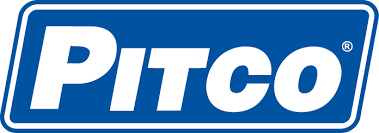The Ripple Effect of Oil Tariffs on Menu Prices

Commercial kitchens are no strangers to price swings, especially when it comes to cooking oil. Lately, however, those shifts have been sharper, and the culprit isn’t just supply and demand—it’s tariffs. For restaurant operators, an oil cost hike doesn’t stop at the fryer. It reaches all the way to the plate, the menu, and the guest experience. Understanding the ripple effect of oil tariffs on menu prices is the first step in helping to deal with these inevitable costs.
Tariffs, Imports, and the Cost of Oil
New tariffs on imported cooking oils from countries like Canada and China are throwing another wrench into the foodservice supply chain. Oils like canola, sunflower, and rapeseed are essential to many kitchen operations, and the U.S. imports a significant portion of its supply. When tariffs are added to these products, the costs don’t just inch upward; they tend to surge.
Operators relying on Canadian canola oil or sunflower oil from China are now seeing steeper invoices. And because cooking oil is often purchased in bulk and used daily across multiple menu items, even small increases compound quickly. Suddenly, something as simple as frying a batch of onion rings becomes noticeably more expensive.
Beyond the added cost, there’s unpredictability. When global trade policy shifts, pricing becomes more volatile, and that volatility makes it hard for operators to plan menus, forecast costs, or negotiate vendor contracts with confidence.
The Menu Impact: Balancing Costs and Guest Expectations
Rising oil prices rarely stay hidden behind the scenes. They affect the food that ends up in front of the customer. Operators may try to offset the increase by raising menu prices, but in a competitive market, that can be risky. Guests are already feeling the pinch from inflation and are quick to notice when their favorite meal costs more than it did last month.
The other option—shrinking portion sizes—carries its own risks. Smaller fries, fewer chicken tenders, or thinner breading can quietly cut costs but often leave a bad taste with repeat customers. Over time, those small changes can hurt perception, loyalty, and word-of-mouth.
It’s a delicate balancing act. Operators need to protect their margins without disrupting the experience their brand promises. And in fast-casual or quick-serve environments, that margin is often razor-thin to begin with.
How to Adapt Without Compromising Quality
So what’s the move when oil costs go up but expectations stay high? It starts with smarter usage. Alternative oils may be an option, particularly if they’re sourced domestically or face fewer regulatory challenges. But switching oils also means adjusting recipes and cooking techniques—not always a simple swap.
A more sustainable approach is optimizing how foodservice businesses use current oil. That means implementing consistent filtration schedules, monitoring oil quality closely, and reducing unnecessary fryer cycles. Little tweaks in kitchen flow, staff training, and maintenance can go a long way.
Some operators are finding success in staggering fry times, batch cooking during high-demand periods, or rotating oil across vats to extend its usable life. These aren’t dramatic changes, but when done consistently, they reduce waste and improve efficiency.
Pitco’s Tech-Forward Approach to Oil Efficiency
That’s where Pitco comes in. Pitco fryers have multiple features that help operators get the most out of every drop of oil. From integrated filtration systems that remove food particles and extend oil life to automated alerts that signal when it’s time to filter or replace, the equipment does more than fry. It supports intelligent decision-making.
Pitco’s fryers are also engineered with efficient vat designs, meaning less oil is required to get the same high-quality results. With models that support split vats, operators can run smaller batches during slow periods without compromising performance.
By helping kitchens reduce oil usage, improve quality, and streamline fryer maintenance, Pitco gives operators the tools to stay profitable, even when outside forces like tariffs put pressure on the bottom line.
Topics
- Foods & Trends (91)
- Fryers (88)
- Oil (58)
- Fried Food (52)
- Filtration (32)
- See All Topics

